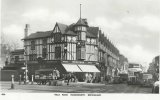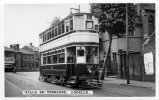Villa, as a residence, dates back to Roman times, where it was a summer residence. In Britain, somewhat later, it became a farm enclosure. Its style has evolved over the centuries and - as mentioned in a previous post - often became the description of a large house or building that we are familiar with.
Here's an excerpt form the Oxford English Dictionary definition for 'Villa' to give a bit of philological context
 "Etymology:
"Etymology: Partly < Latin
villa country-house, farm, etc., perhaps a diminutive from the stem of
vīcus village, hamlet, country-seat; partly < Italian
villa (whence also French
villa, Spanish
villa, and Portuguese
vila) from the same source.
(Show Less)
"1. Originally: a country mansion or residence, together with a farm, farm-buildings, or other houses attached, built or occupied by a person of some position and wealth; a country seat or estate. In later and more general use: a residence in the country, or in the neighbourhood of a town, usually of some size and architectural elegance and standing in its own grounds.
"d. Hence, any residence of a superior or handsome type, or of some architectural pretension, in the suburbs of a town or in a residential district; also, any small better-class dwelling-house, usually one which is detached or semi-detached.The word is frequently employed in the names given to particular houses of this type, as Windsor Villa.
1755
Connoisseur (1756) No. 81. 483 I cannot help observing, that persons polite enough to be fond of such exquisite refinements, are partly in the same case with the mechanic at his dusty villa.
"1781 W. Cowper
Retirem. 481 Suburban villas, highway-side retreats, That dread th' encroachment of our growing streets.
"1788 A. Young
Jrnl. 15 Aug. in
Trav. France (1792) i. 114 To Havre de Grace,..the hills..almost covered with little new built villas.
"1825 C. M. Westmacott
Eng. Spy I. 318 Incongruous edificies called villas.
"1849 T. B. Macaulay
Hist. Eng. I. iii. 349 No long avenues of villas, embowered in lilacs and laburnums, extended from the great centre of wealth.
"1852 R. S. Surtees
Mr. Sponge's Sporting Tour i. ii. 6 The farm-houses are dotted about as thickly,..as to look like inferior ‘villas’ falling out of rank.
"1882 M. E. Braddon
Mt. Royal II. ix. 167 I wish you would let me build you a villa at Torquay or Dartmouth."







